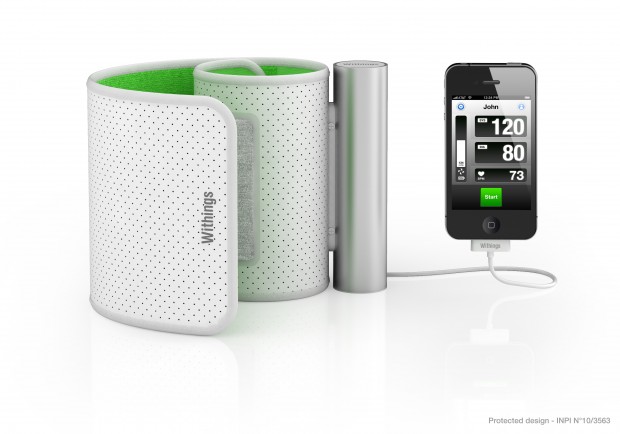
If you’re a tech journalist and the tension of covering the vast array of new gadgets at CES has got you worrying about your blood pressure, you might want to stop by booth 3619 in the North Hall. That’s where Withings, a French startup and Internet-of-Things manufacturer, is promoting its iPhone blood pressure monitor.
Medical-device applications for the iOS have an intuitive appeal; they seem to answer deeply-held cybernetic erotics that the iPhone has tapped into like no other kind of gadget. And yet in the implementation, such devices have proven less successful. The reason is often simple: the work of the device is already accomplished less expensively by other devices. Withings, who also manufactures a wifi-enabled scale, has priced its monitor at $129; digital blood pressure cuffs are available on the Internet or at your local drugstore for a fraction of that price.
In Withings’ defense, its device does things the less expensive monitors don’t do. Its associated app will crunch the data for you, keeping track of tracking average readings, comparing morning and evening measurements, and doing the other kinds of monitoring that can be crucial for heart health (or a real boon to the hypochondria-prone). Withings avoids the lameness of the maker of the iBreath, an iPhone add-on breathalyzer that merely used the phone as a power supply. With keychain breathalyzers available for five bucks, the $60 iBreath was a flop�despite a stunningly charismatic advertisement:
The most successful plug-in self-monitoring gadgets for iPhones and iPods thus far haven’t been medical devices, but fitness fobs like the Nike+ system, which combines music with pedometer, mapping, and data-sharing capacities for runners (for whom times and distances are like donuts dipped in crack). Maybe gadget-makers just haven’t hit on the optimal iPhone medical peripheral yet. A few thoughts: a functional MRI for the iPhone. It’s the size of a Fiat, but it plugs right into your iPad! Or an appetite suppressant app (although you’d have to swallow your phone). Or best of all, an iOS-enabled endoscope, so you can administer your own colonoscopy�and even share it with your friends.
 Gearfuse Technology, Science, Culture & More
Gearfuse Technology, Science, Culture & More


